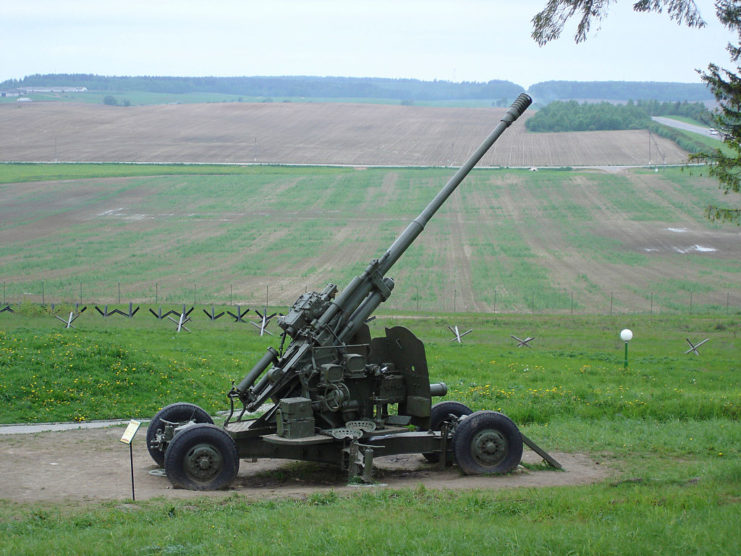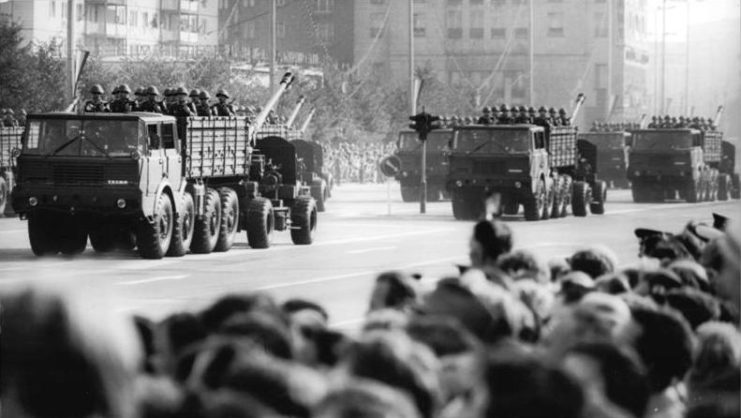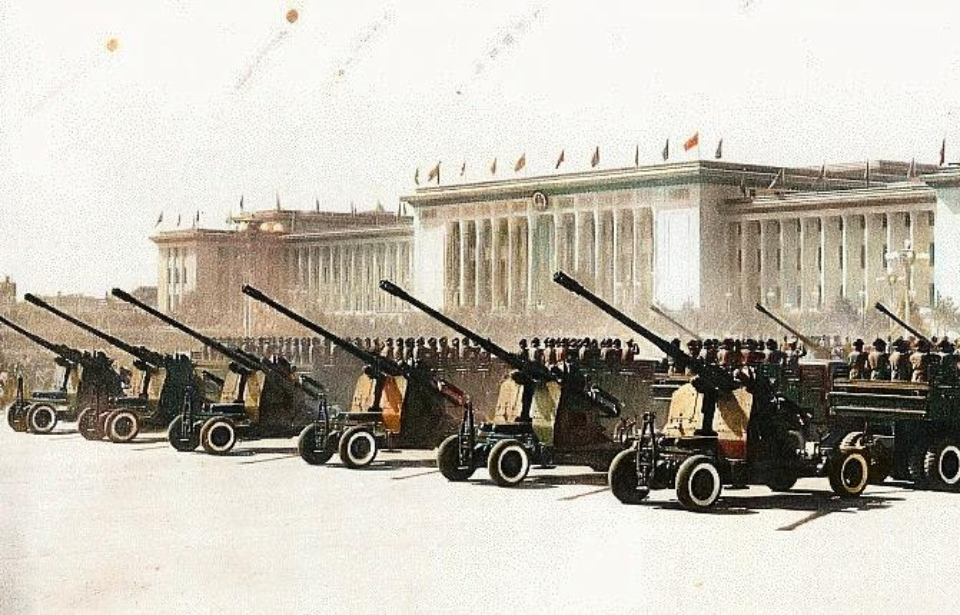Recently, Russian forces have been spotted using KS-19 anti-aircraft guns during the ongoing Russo-Ukrainian War. The Soviet-era artillery piece is without a doubt powerful enough to face modern-day armies, but with more sophisticated weapons readily available, what do the Russians see in the KS-19 that makes it reliable and worthy of action?
The KS-19 was developed during World War II as the B-34
The 100 mm air defense gun KS-19 is a Soviet-era anti-aircraft gun that began life as the B-34. It was equipped by ships during the Second World War, with a ground-mounted version developed in the early years of the Cold War. Dubbed the KS-19, it was designed to combat high-flying threats like mass bomber formations, which had been a key component of combat during World War II.

The KS-19 entered service in 1948 and can fire High Explosive (HE), High Explosive Fragmentation (HE-FRAG) and Fragmentation (FRAG) projectiles at in-air targets. It can also penetrate up to 185 mm of armor from a distance of 1,000 meters. In these instances, it’s equipped to fire Armor Piercing-Tracer (AP-T) and Armor Piercing Capped-Tracer (APC-T) rounds.
When used in conjunction with the SON-9 fire director radar and PUAZO-6/19 director, the KS-19 is deadly on the battlefield.
The KS-19 is as bulky as it is powerful
The 21,000-pound KS-19 is a towed weapon, typically hauled by heavy-tracked artillery tractors that require a 15-man crew. Once in place, ammunition is loaded as a single round into the loading tray, with the anti-aircraft gun capable of firing 15 rounds per minute – an impressive feat, given its size.

Some slight drawbacks to the KS-19 include its heavy weight and poor maneuverability. It can also prove deadly for those who operate it. While the crew stand behind a front-facing protective barrier, there’s no protection at the sides or overhead, which can prove fatal when bombers loom above.
Being a Soviet-made gun means that many of the between 5,000-10,500 KS-19s that were produced saw action in Korea and Vietnam. Its design was also shared with China, which developed its own version, dubbed the Type-55.
Currently, the anti-aircraft gun is equipped by the Armed Forces in Iran, Vietnam, Armenia and North Korea, among others.
Use on the frontlines during the Russo-Ukrainian War
Today, most modern militaries rely on surface-to-air missiles (SAMs) to defend against threats in the air, but, interestingly, the KS-19 was recently spotted by the Armed Forces of Ukraine during the ongoing Russo-Ukrainian War. In September 2022, Ukraine announced that troops had captured at least three of the anti-aircraft guns, which reveals an interesting fact about their Russian enemies.
#Ukraine: Ukrainian forces captured around 7 #Russia-n KS-19 100 mm air defense guns during the offensive in #Kharkiv.
H/t for ID @Rebel44CZ pic.twitter.com/nC9NSQf5vy— Arslon Xudosi 🇺🇦 (@Arslon_Xudosi) September 8, 2022
If the Russian forces have resorted to using outdated, out-of-service guns, many experts feel this could mean the country is facing weapons shortages. This also isn’t the first time the Russian Army has been spotted using outdated equipment in Ukraine.
T-64 tanks, designed in the 1960s, have been spotted in southern Ukraine, along with other old artillery systems and vehicles. As well, videos have surfaced corresponding with a report from Britain’s Ministry of Defence, which claims Russia could be moving its fleet of T-62 tanks out of “deep storage” to use in Ukraine. Other sources have stated conscripted Russian troops are being sent to the frontlines with rusty AK-47s.
More from us: M61 Vulcan: A Modern Take On the Civil War-Era Gatling Gun
Whether the Russian Army was simply unprepared for the Ukrainian counteroffensive or Ukraine has successfully crippled the enemy through thorough attacks against opposing artillery and vehicles, there’s no denying Russia is digging into the past in an attempt to bring about success in this conflict.
